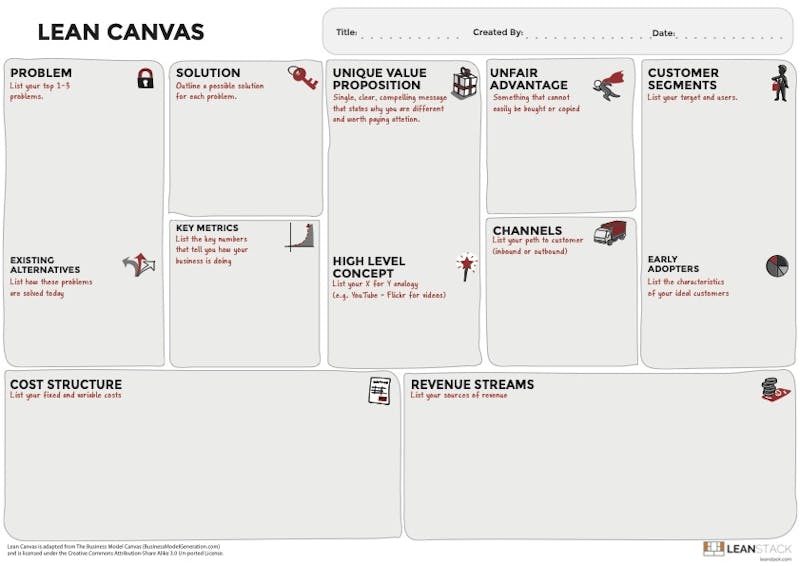|
Let us continue discussing Product Backlog Management tools that support empowered product teams in discovering solutions, aligning stakeholders, and delivering measurable outcomes.
In this update on the course, I will compare the Product Strategy Canvas and Lean Canvas—the 30,000 feet level in the alignment model of the course:
Advantages of the Product Strategy Canvas over the Lean Canvas
The Product Strategy Canvas is comprehensive in its approach to strategy, encompassing a wide array of elements that cover both the high-level vision and the practical execution steps. Its emphasis on vision and values helps ensure the product aligns with the company's mission and culture. The canvas also dives into the competitive landscape, asking critical questions about the market and how the product fits. This canvas encourages deep thinking about a product's strategic positioning rather than just its operational aspects.
- The Product Strategy Canvas emphasizes a holistic approach, integrating the product's vision and strategic direction with its operational aspects.
- It prompts consideration of the broader market environment, competition, and potential moats, which is critical for differentiating a product.
- There is a strong emphasis on messaging and communication strategies, which are key to gaining stakeholder buy-in and establishing market positioning.
- The canvas encourages identifying trade-offs, helping to clarify what the product will not be, which is as important as knowing what it will be.

Advantages of the Lean Canvas over the Product Strategy Canvas
On the other hand, the Lean Canvas is more focused on the immediate practicalities of launching a product. It is action-oriented and designed to adapt quickly to changes, which is crucial for startups in the early stages of product development. The Lean Canvas forces the team to zero in on the problem-solution fit, which can be pivotal for a new venture trying to find its footing. It is also succinct and straightforward, making it easier to iterate rapidly and pivot as necessary based on user feedback and market response.
- The Lean Canvas is action-oriented and designed for speed, making it ideal for startups that need to iterate quickly.
- It forces a focus on problem-solution fit, ensuring that a product is being developed with market needs in mind.
- The Lean Canvas includes channels and customer segments, directly linking product features and the go-to-market strategy.
- It provides a structured approach to evaluating cost structure and revenue streams, which is essential for early-stage business model validation.

Scenarios Optimal for Both Canvases
Both canvases are ideal during developing a new product or service, where a clear understanding of the market, customers, and strategic direction is crucial. They are especially beneficial when a team needs to align on the product vision, identify key metrics, and grasp the competitive landscape.
- Both canvases can be used to map out strategic planning and operational approaches when launching a new product or entering a new market.
- In the early stages of a startup, when validating product/market fit and adjusting strategy based on feedback and learning.
- When a mature company seeks innovation or pivot, both canvases can guide the development of new product lines or services.
Preference for the Product Strategy Canvas
I prefer the Product Strategy Canvas when working with an established company that is looking to launch a new product that must align with existing brand values and market positioning. It is also preferable when the product development cycle is not extremely rushed, allowing for a thorough analysis of trade-offs, unique activities, and growth strategies.
-
Established Companies with Complex Products: In mature organizations with an intricate product ecosystem and market presence, the Product Strategy Canvas helps align product development with the organization's long-term goals and market position. This is especially relevant in automotive, pharmaceuticals, or consumer electronics industries, where products involve extensive R&D, a broad range of competencies, and significant resource allocation.
-
Strategic Differentiation in Competitive Markets: The Product Strategy Canvas assists businesses operating in highly competitive markets where strategic differentiation is key. It helps them identify unique value propositions and messaging strategies and create barriers to entry (moats). Thus, it's valuable for companies aiming to sustain or enhance their competitive advantages.
-
Organizations Undergoing Strategic Transformation: Companies looking to pivot or transform their business strategies can benefit from this canvas. It helps reassess and realign their vision, market approach, and internal capabilities to adapt to changing market conditions or organizational objectives.
-
Scaling and Growth Strategies: The Product Strategy Canvas helps businesses at a scaling stage map out growth strategies, identify new market opportunities, and reinforce their market positioning.
Preference for the Lean Canvas
The Lean Canvas would be my choice for early-stage startups needing to validate their business ideas quickly. It is most effective when the market is not fully understood, and the product needs rapid iteration and validation.
-
Early-Stage Startups and New Ventures: Startups that aim to validate their business idea and achieve product-market fit find the Lean Canvas especially beneficial. Its focus on problem-solution dynamics, MVP development, and flexibility is essential for navigating the uncertainty and fast-paced nature of early-stage ventures.
-
Rapid Product Iteration and Pivoting: In situations where quick iteration and flexibility are required, such as tech startups or innovative app development, the Lean Canvas provides a framework for rapidly testing hypotheses, adjusting based on market feedback, and pivoting if necessary.
-
Testing New Market Segments or Products: Even within larger organizations, the Lean Canvas can be a valuable tool when exploring new market segments or launching new products. It allows teams to focus on understanding customer problems, developing fitting solutions, and quickly assessing market viability without elaborate strategic planning.
-
Lean Startup Methodology Adoption: Companies that embrace the lean startup methodology, which focuses on speed, customer feedback, and agile development, will find the Lean Canvas aligns well with these principles. It is especially effective in dynamic sectors like technology, where market conditions and customer preferences change rapidly.
In summary, the choice between these two canvases largely depends on the stage and nature of the business, its strategic needs, and the market environment in which it operates. The Product Strategy Canvas is better suited for established businesses that need comprehensive strategic planning, while the Lean Canvas excels in dynamic startup scenarios that require agility and rapid validation.
Maximizing Customer Value
By ensuring a well-structured, transparent, and high-quality Product Backlog, product managers and teams can:
- Minimize wasted effort on misaligned or unclear tasks.
- Prioritize initiatives that directly address customer needs and business objectives.
- Create an iterative feedback loop to refine and enhance the backlog based on real-world insights, ensuring continuous delivery of meaningful value.
The Advanced Product Backlog Management course is designed to give you practical, battle-tested tools to improve your value delivery. It’s not just about keeping stakeholders aligned or managing a backlog — it’s about using these things to drive actual results. Here’s a reminder of what you’ll learn:
-
Align Stakeholders and Teams: Build shared ownership of your Product Backlog by integrating strategy, roadmaps, and customer insights to foster collaboration.
-
Master Advanced Tools: Learn to prioritize effectively and use tools like user story mapping, product roadmaps, and discovery frameworks to maximize the value delivered to customers, reflected in the composition and ordering of the Product Backlog.
-
Say Goodbye to Anti-Patterns: Identify and resolve common Product Backlog pitfalls, ensuring transparency and alignment with organizational goals.
-
Drive Outcomes Over Output: Learn practices that turn your backlog into a strategic asset focused on delivering meaningful customer and business results.
Thanks for your patience and understanding. I know this course will be a game-changer for you, and I’m excited to share it soon.
📅 Training Classes, Meetups & Events
Upcoming classes and events:
🖥 💯 🇬🇧 Jan 27 — Online Class Release: Align, Discover, Deliver — The Advanced Product Backlog Management Course
🖥 🇩🇪 Jan 28-31 — Live Virtual Class: Professional Scrum Product Owner Training (PSPO I; German)
🖥 💯 🇬🇧 Feb 4-6, 2025 — Live Virtual Open Space: Hands-on Agile 2025: From Concept-Based to Context-Based Agility
🖥 🇬🇧 Feb 12-13 — Live Virtual Class: Professional Scrum Master - Advanced Training (PSM II; English)
🖥 💯 🇬🇧 Feb 27 — Live Virtual Class: Professional Scrum Facilitation Skills Class (PSFS; English)
🖥 💯 🇬🇧 Mar 6-Apr 3 — Live Virtual Cohort: Align, Discover, Deliver: The Product Backlog Management Cohort Class (English)
🖥 🇩🇪 Mar 11-12 — Live Virtual Class: Professional Scrum Product Owner Training (PSPO I; German)
🖥 🇬🇧 Mar 26-27 — Live Virtual Class: Professional Scrum Master - Advanced Training (PSM II; English)
See all upcoming classes here.

I am looking forward to hearing your feedback and keeping you updated as we approach the launch date!
Best,
|


